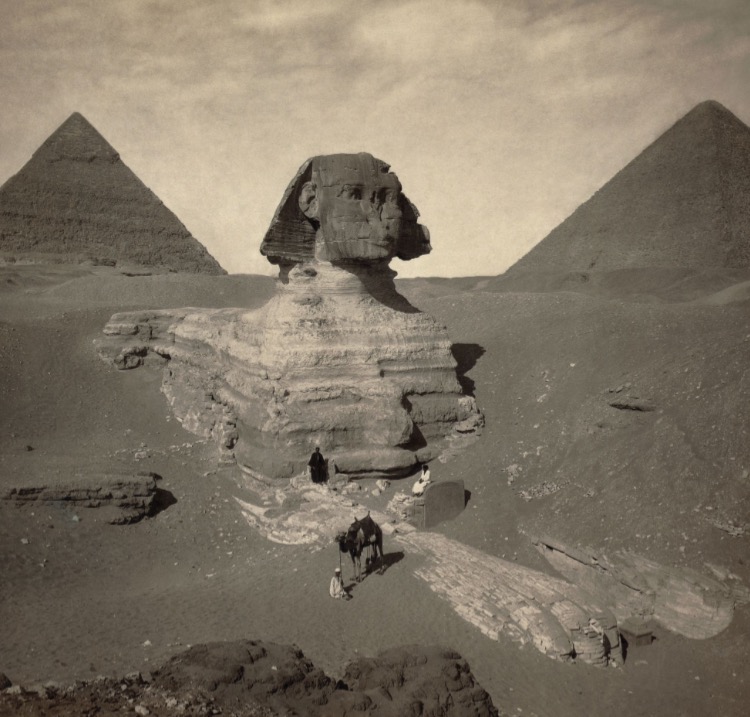 The Majestic Sphinx is a non-fiction work by Mark Twain. It comes from a collection of travel letters from 1869 called Innocents Abroad, and placed in an anthology called, Into the Mummy’s Tomb: Ancient mystery—and terror—unearthed by the world’s greatest writers. Some of the other writers include Anne Rice, Bram Stoker, and Edgar Allan Poe, so who knows what else is coming up next.
The Majestic Sphinx is a non-fiction work by Mark Twain. It comes from a collection of travel letters from 1869 called Innocents Abroad, and placed in an anthology called, Into the Mummy’s Tomb: Ancient mystery—and terror—unearthed by the world’s greatest writers. Some of the other writers include Anne Rice, Bram Stoker, and Edgar Allan Poe, so who knows what else is coming up next.
I began with Mark Twain because I didn’t expect Twain to write a story about a mummy, (although you never know what to expect of some of these great writers) and because this is far different from The Adventures of Huckleberry Finn. He begins The Majestic Sphinx as if the Sphinx was waiting for him all along. Twain describes the Sphinxes face as “sad, so earnest, so longing, so patient.”
Twain calls the Sphinx a “stone” that seemed “sentient.” It “was thinking.” The Sphinx gazes out into the horizon and stares into an ocean of time. Twain uses this opportunity to give us a glimpse into what the Sphinx has looked at in the past and what it was thinking about: wars, empires, nations, life and death.
At one point Twain says he shall feel the same way when he stands before the “awful presence of God.” He says it with certainty and without a doubt, as if standing before the Sphinx confirmed his beliefs there is a higher power.
When he sees relic-hunters described as “well-meaning reptiles” who “had crawled up there” (on the face of the Sphinx), Twain is brought out of the trance-like state he is in when it was only him and the Sphinx. Twain is so annoyed he proceeds to call upon a Sheik “to arrest” or “warn” the relic-hunter about the “laws of Egypt.” After the Sheik speaks to the relic-hunter, he “desisted and went away.”
As soon as the relic hunter is gone, Twain returns to the trance-like state he was in before. His focus is on the Sphinx again. “The Sphinx: a hundred and twenty-five feet long…” Twain begins by including the measurements of the Sphinx. He compares the “block of stone” as large as the Fifth Avenue Hotel “before the usual waste (by the necessities of sculpture) of a fourth or a half of the original mass was begun.” Twain says he set down the “numbers and remarks” to suggest “the prodigious labor of carving of it so elegantly, so symmetrically, so faultlessly, must have cost.” (The Fifth Avenue Hotel was demolished in 1908. It stood for only 49 years. It took around three years to construct it.) Twain wonders how the Sphinx could remain so sharp and unmarred after so many thousands of years weather exposure. He ends with the question archaeologists have trouble answering to this day: “Now did it take a hundred years of patient toil to carve the Sphinx?” It seems probable. “It seems probable.”